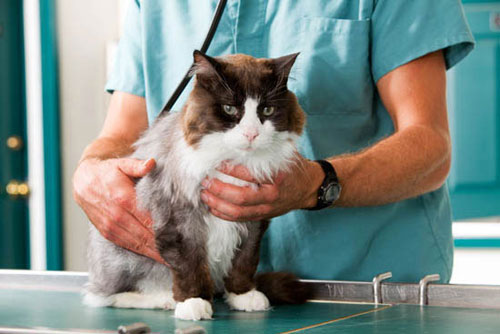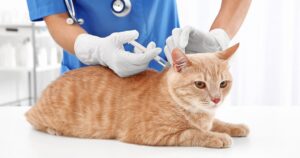Introduction
Importance of Medicating Cats
Guaranteeing the prosperity of your feline companion includes administering medications. Whether it’s for a particular health condition or preventive care, giving medications to your cat is a fundamental piece of capable pet proprietorship. Like people, cats can experience the ill effects of different illnesses, and convenient medication can play a vital role in their recuperation and health.
Moves in Administering Medication to Cats
Administering medication to cats can be an interesting errand. Cats are known for their autonomous nature and may not collaborate with regards to taking pills or getting infusions. Beating these difficulties requires persistence, understanding, and the right techniques. In this article, we’ll investigate down-to-earth tips and techniques to make the cycle smoother for both you and your feline friend.
Grasping Your Cat’s Medication
Sorts of Medications for Cats
Understanding the various kinds of medications available for cats is the fundamental stage in guaranteeing treatment. Cats can get medications in different forms, including oral medications like pills or liquids, topical medications, and injectable medications. Each type has its own arrangement of difficulties and requires explicit administration techniques.
Oral Medications
With regards to oral medications, cats might need pills or liquid formulations. Pill administration can be a test, including in a manual situation or with the use of pill poppers. Be that as it may, liquid medications can be controlled using needles or blended in with nourishment for a more satisfactory encounter.
Topical Medications
Topical medications are often applied to the skin or fur of the cat. Proper application is crucial to ensuring the medication reaches the intended areas. Additionally, understanding how to handle and stroke your cat during this process can make it a more pleasant experience for both of you.
Injectable Medications
Injectable medications are administered through a needle. Realising the right infusion locales and taking care of needles is fundamental to staying away from pointless pressure for your cat and guaranteeing the medication is conveyed.
Reason and Dosage Rules
Whether your cat is prescribed medication for a particular health issue or gets non-prescription medications for general prosperity, understanding the reasons and dosage rules is pivotal. Various medications fill different needs, from getting contaminations to overseeing ongoing circumstances. Observe your veterinarian’s proposals and rules to guarantee the right dosage and recurrence.
Meeting with the veterinarian
Before beginning any medication routine for your cat, it’s fundamental to talk with your veterinarian. They can give you significant bits of knowledge about your cat’s health, recommend the proper medications, and provide direction on the best administration techniques. Normal communication with your vet guarantees that you’re giving the best care customised to your cat’s particular requirements.
Preparation for Medication Administration
Gathering Supplies
Before you begin administering medication, gather all the necessary supplies. This includes the medication itself, treats or pill pockets to make the experience more enjoyable, applicators or syringes for precise dosage, and towels or wraps to secure your cat if needed. Having everything ready beforehand ensures a smooth and stress-free process.
Creating a calm environment
Cats are delicate to their environmental elements, so establishing a quiet climate is vital for fruitful medication administration. Choose a quiet and comfortable space where your cat feels secure. Cut distractions and noise to help your cat stay relaxed during the process.
Washing hands and ensuring safety
Before handling any medication or interacting with your cat, wash your hands. This guarantees your hands are perfect as well as preventing the exchange of fragrances that could make your cat vigilant. Moreover, guarantee that the medication is put away far away from your cat to keep it away from unplanned ingestion.
Techniques for Administering cat Medication
Oral Medications
Pill Administration: Administering pills to cats can be testing, but, with the right techniques, it turns out to be more sensible. Manual pill position requires opening your cat’s mouth and setting the pill at the rear of the tongue, trailed by a delicate back rub to support gulping. Or, pill poppers can help you deliver the medication without handling the pill.
Liquid Medication: With regards to liquid medication, utilising needles is a famous strategy. Place the needle towards the edge of your cat’s mouth and manage the liquid to forestall stifling. Blending liquid medication in with your cat’s #1 food can likewise make the experience more pleasant for them.
Topical cat Medication
Proper Application: Topical medications need to be applied to ensure they reach the targeted areas. Follow the instructions provided by your veterinarian, and be gentle yet firm in your application. Take the time to reassure your cat during the process to build trust.
Handling and Stroking Techniques: During topical medication application, use gentle handling and stroking techniques to keep your cat calm. Uplifting feedback, like contribution treats or recognition, can create a positive relationship with the experience.
Injectable cat Medication
Understanding injection sites: If your cat requires injectable medications, understanding the appropriate injection sites is essential. Your veterinarian will guide you to the correct locations to administer the injections, minimising discomfort for your cat.
Correct needle handling: Legitimate needle care is vital to try not to cause agony or stress to your cat. Work on dealing with needles before administering any infusions, and adhere to your veterinarian’s directions to guarantee a smooth cycle.
Dealing with resistant cats
Signs of Discomfort or Resistance: Recognising signs of discomfort or resistance is vital during medication administration. Watch for cues such as vocalisation, attempts to escape, or aggressive behavior. These signs indicate that your cat may be experiencing stress.
Tips for Handling Uncooperative Cats
Positive Reinforcement: Utilising encouraging feedback techniques can assist with facilitating your cat’s opposition. Offer treats, recognition, or recess as a compensation for appropriate conduct during and after medication administration. This creates a positive association and makes future sessions more manageable.
Wrapping Techniques: For particularly resistant cats, wrapping them in a towel or using designed wraps can help restrain them. This technique provides a sense of security and minimises the risk of scratches or bites during the process.
Seeking professional help: On the off chance that your cat opposes medication administration, look for proficient help from your veterinarian or a confirmed creature behaviorist. They can provide more methodologies and arrangements custom-fitted to your cat’s particular necessities.
Monitoring and follow-up
Observing for side effects: In the wake of administering medication, watch your cat for any expected secondary effects. This refers to changes in conduct, appetite, or energy levels. Assuming you notice any unforeseen responses, contact your veterinarian.
Keeping a Medication Log: Keep a medication log to track dosages, administration times, and any noticed responses. This assists you with remaining coordinated and gives important information to your veterinarian during follow-up arrangements.
Normal veterinary check-ups: Schedule normal check-ups with your veterinarian to test your cat’s health and change the medication plan on a case-by-case basis. These check-ups guarantee that your cat gets ideal care and that any progressions in their health are tended to.
Conclusion
Recap of Key Points
Administering medication to cats is a significant part of capable pet possession. Grasping the various kinds of medications, appropriate administration techniques, and tending to obstruction can make the interaction more reasonable.
The Significance of Steady Medication Administration
Consistency is key with regards to medication administration. Following your veterinarian’s suggestions and keeping a positive attitude helps work with trust between you and your cat, making every meeting more effective.
Building Trust with Your Cat During Medication Administration
Building trust is a continuous interaction. By moving towards medication administration with persistence, delicacy, and encouraging feedback, you can reinforce the bond with your cat and guarantee they get the care they need for a blissful and healthy life.







